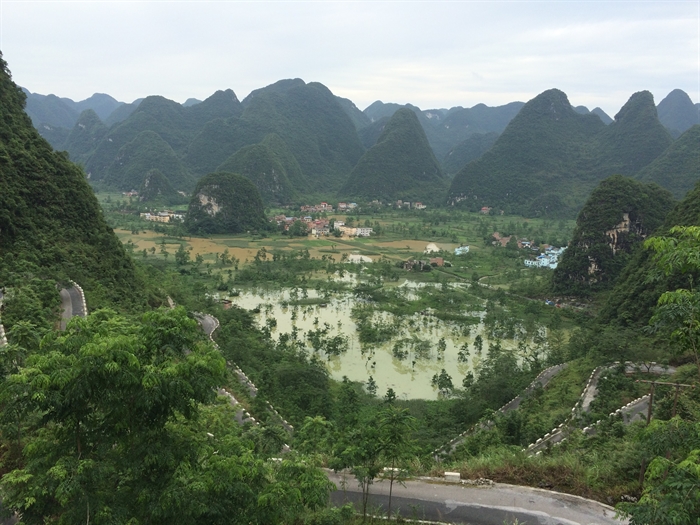Chinese Researchers Issue Critical Warning on Groundwater Flooding Risks
Karst regions, which cover approximately 15% of the Earth's land area, provide freshwater to about a quarter of the global population. Despite their importance, these areas are prone to frequent and often unnoticed groundwater floods. These hidden floods pose substantial risks, yet they have historically been neglected by the public, academia, and policymakers, revealing a significant gap in environmental management.
In a recently letter published in Science, researchers led by Prof. Yunpeng Nie from Huanjiang Observation and Research Station of Karst Ecosystem, the Institute of Subtropical Agriculture of the Chinese Academy of Sciences (ISA), issued a critical warning of the risks of groundwater flooding. They called for comprehensive water management to address groundwater floods effectively. Notably, this is the third time that Science has published a paper related to the karst eco-environment in southwest China.
The researchers synthesized studies from karst areas in southern China and Iran, as well as from other non-karst regions globally. Their findings highlight the unique characteristics, destructive potential, and complex causes of groundwater floods, along with the environmental repercussions and risks associated with pollutant migration into groundwater systems.
According to the researchers, traditional flood control methods, such as dikes and dams, are inadequate for addressing groundwater floods due to their fundamentally different mechanisms from surface floods. The lack of dedicated monitoring and research for groundwater floods limits the development of predictive models and constrains the use of AI technologies in flood forecasting, particularly in regions lacking sufficient data.
To address these issues, the researchers propose several strategies, including the development of cost-effective groundwater monitoring and data transmission technologies. They advocate for the establishment of extensive networks of groundwater monitoring systems and stress the need to assess the impacts of vegetation and land use changes on groundwater dynamics.
“The groundwater flooding, though prevalent, remain widely unrecognized and disregarded globally,” said Dr. Hamid M. Behzad, the first author of the paper. “These measures aim to strengthen comprehensive water management plans that actively involve the public and are coordinated by operational departments, ensuring the sustainable use of both surface and groundwater resources.”
Contact:isa Yunpeng Nie
E-mail: nyp@isa.ac.cn

Groundwater flooding (clear water), exacerbated by overland flooding (muddy water), occurred across southwest China’s karst lowland in 2016. (Photograph by Yunpeng Nie)
Download attachments: